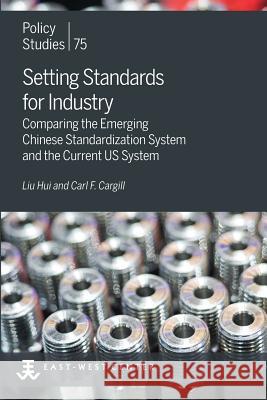Setting Standards for Industry: Comparing the Emerging Chinese Standardization System and the Current US System » książka
Setting Standards for Industry: Comparing the Emerging Chinese Standardization System and the Current US System
ISBN-13: 9780866382762 / Angielski / Miękka / 2017 / 64 str.
Setting Standards for Industry: Comparing the Emerging Chinese Standardization System and the Current US System
ISBN-13: 9780866382762 / Angielski / Miękka / 2017 / 64 str.
(netto: 36,40 VAT: 5%)
Najniższa cena z 30 dni: 37,91
ok. 16-18 dni roboczych.
Darmowa dostawa!
In every country, standardization is a reflection of that nation's level of industrialization. Creating consistent, widely adopted standards helps industries manufacture products in ways that are efficient, safe, repeatable, and of high quality. Standards are essential for translating new ideas, inventions, and discoveries into economic growth and prosperity. Whether standards originate from national governments, professional associations, private enterprises, or other standard-setting entities, they capture the interdependencies among the different sectors. On a broader level, they also embrace a nation's industrial, technical, and social policies. As nations change, standardization principles and practices change with them.Nowhere is this more true than in China today, where a historic revision of the Chinese standardization regime is taking place. New methods, new ideas, and new strategies for effective standardization are percolating within Chinese government and civil society. One of the new ideas is "association standards," which are set by nonprofit, nongovernmental "social organizations" such as trade and professional associations. Though widespread in the United States, association standards are in the developmental stages in China, with reform efforts now focused on increasing the decision-making autonomy of nongovernmental standard-setting organizations.This paper compares Chinese and American systems for setting industrial standards. Specifically, the paper compares the US system of voluntary standards, which relies on consensus among parties and market-driven initiatives, with current efforts to reform China's government-directed standardization system.











